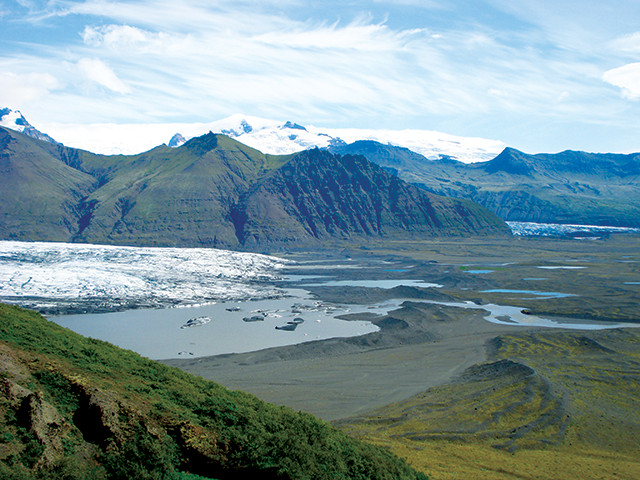
by Mary Caperton Morton Tuesday, March 29, 2016

View from Skaftafell National Park toward Öraefajökull Volcano. The toe of the Skaftafellsjökull Glacier and its ice lagoon are to the left. Svínafellsjökull Glacier is to the right. Credit: Tommy Bee.
The Öraefajökull Volcano boasts Iceland’s highest peak — 2,109 meters above sea level — and has the reputation of being Iceland’s largest and most violent volcano. Major eruptions in 1362 and 1727 were among the most explosive in the island’s history, and both were accompanied by catastrophic glacial floods. After the 1362 event, the Icelandic word öraefi, originally meaning “area without a harbor,” was rechristened to mean “wasteland.”
In March 2015, swarms of earthquake activity were detected under Öraefajökull. Similar patterns of seismicity have been recorded every few months since 2011, before which the volcano had been eerily quiet for decades. The depth and location of the swarms seem to indicate the rumblings are being generated by fresh magma entering Öraefajökull’s magma chamber.
Today, the volcano’s caldera is covered by the 1,000-meter-thick Vatnajökull Ice Cap, the largest in Europe, and which overlooks the Icelandic ring road between the settlements of Höfn and Vík. The effects of an eruption similar in size to the eruptions in 1362 or 1727 could produce dire consequences for much of Iceland and reach as far as Europe.
© 2008-2021. All rights reserved. Any copying, redistribution or retransmission of any of the contents of this service without the expressed written permission of the American Geosciences Institute is expressly prohibited. Click here for all copyright requests.